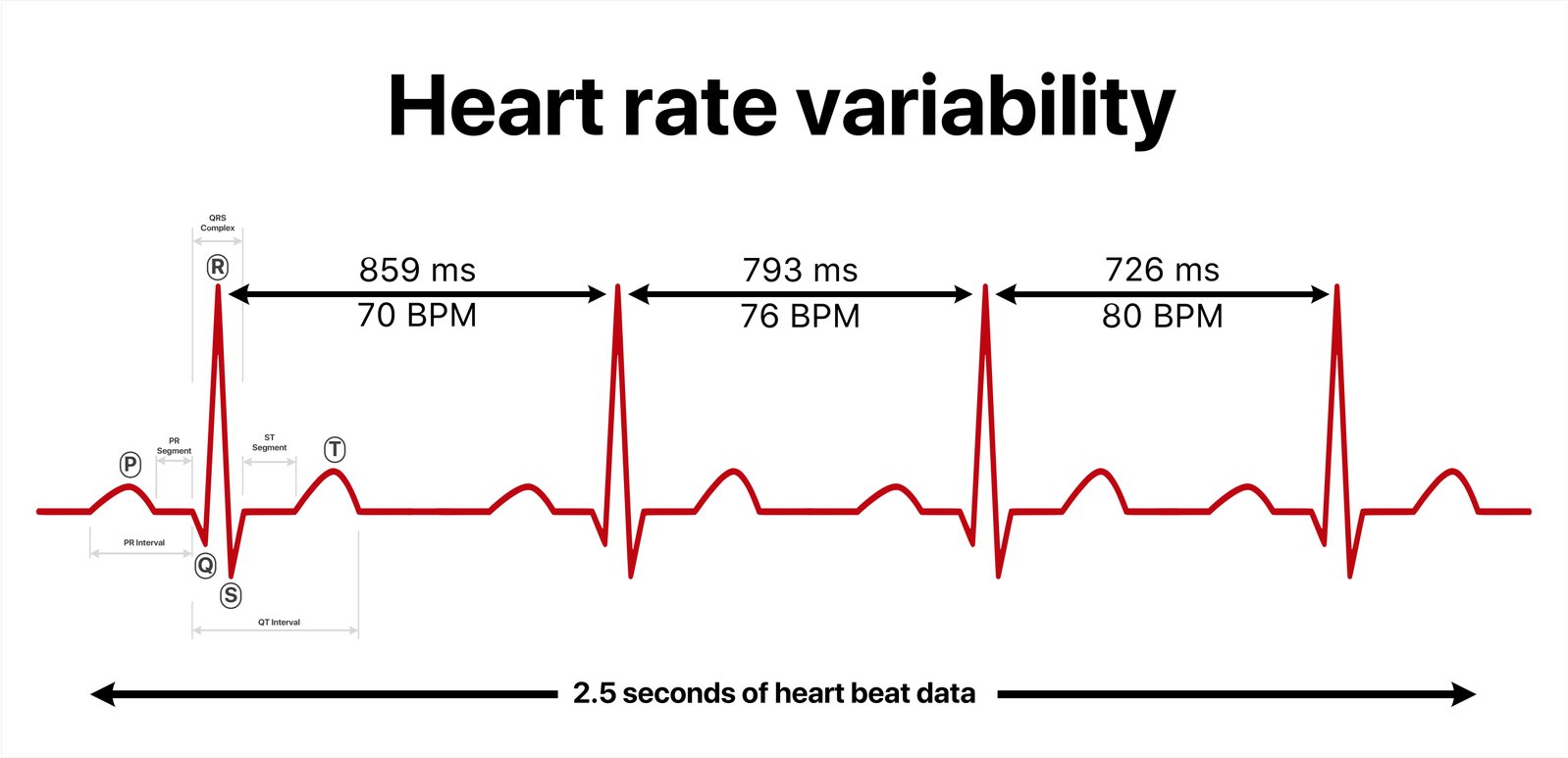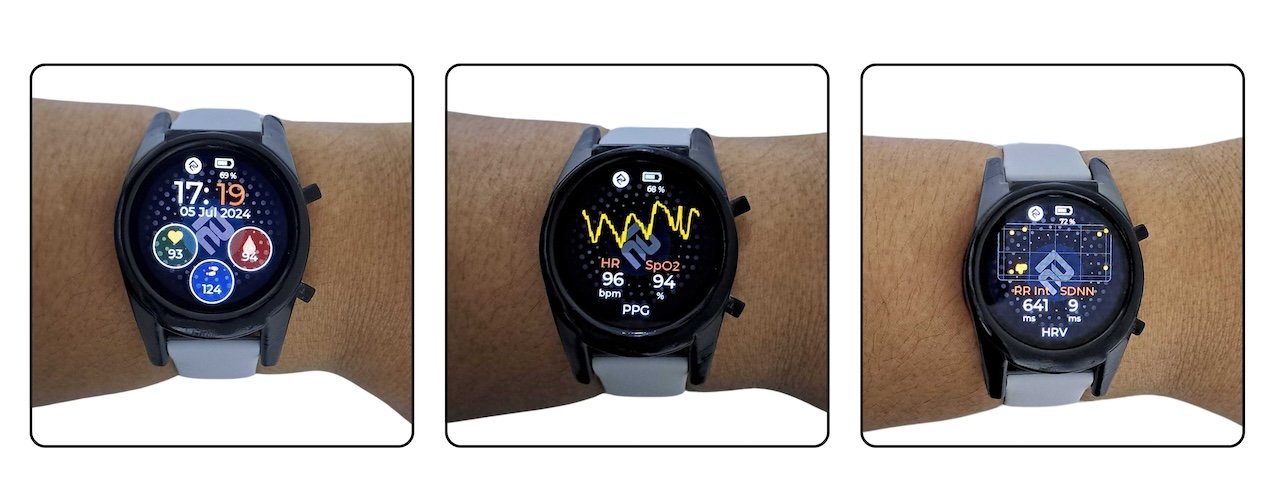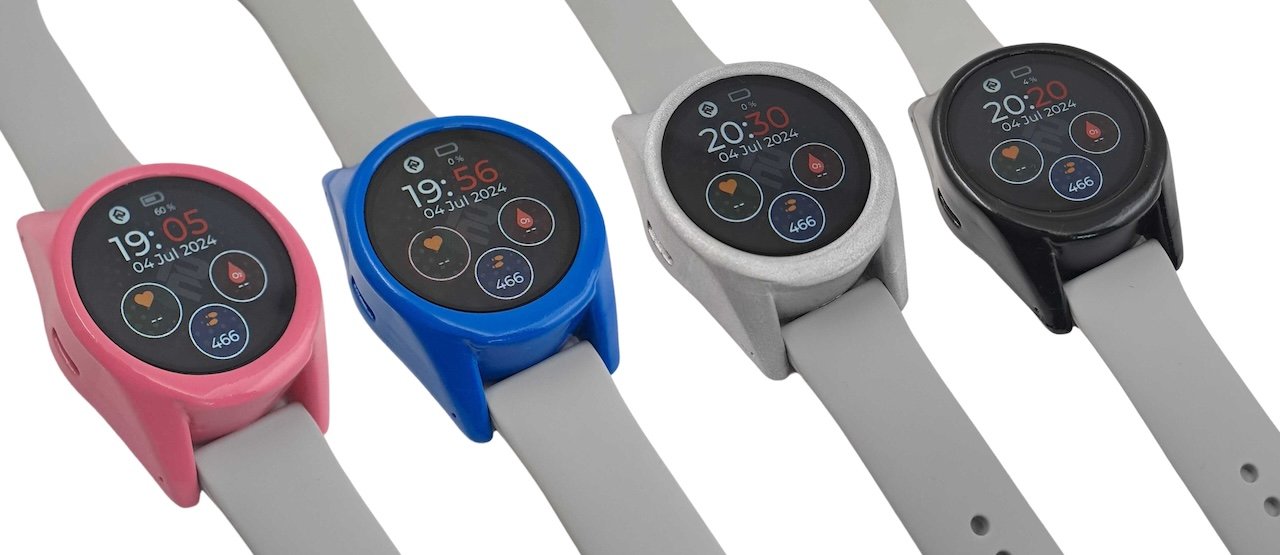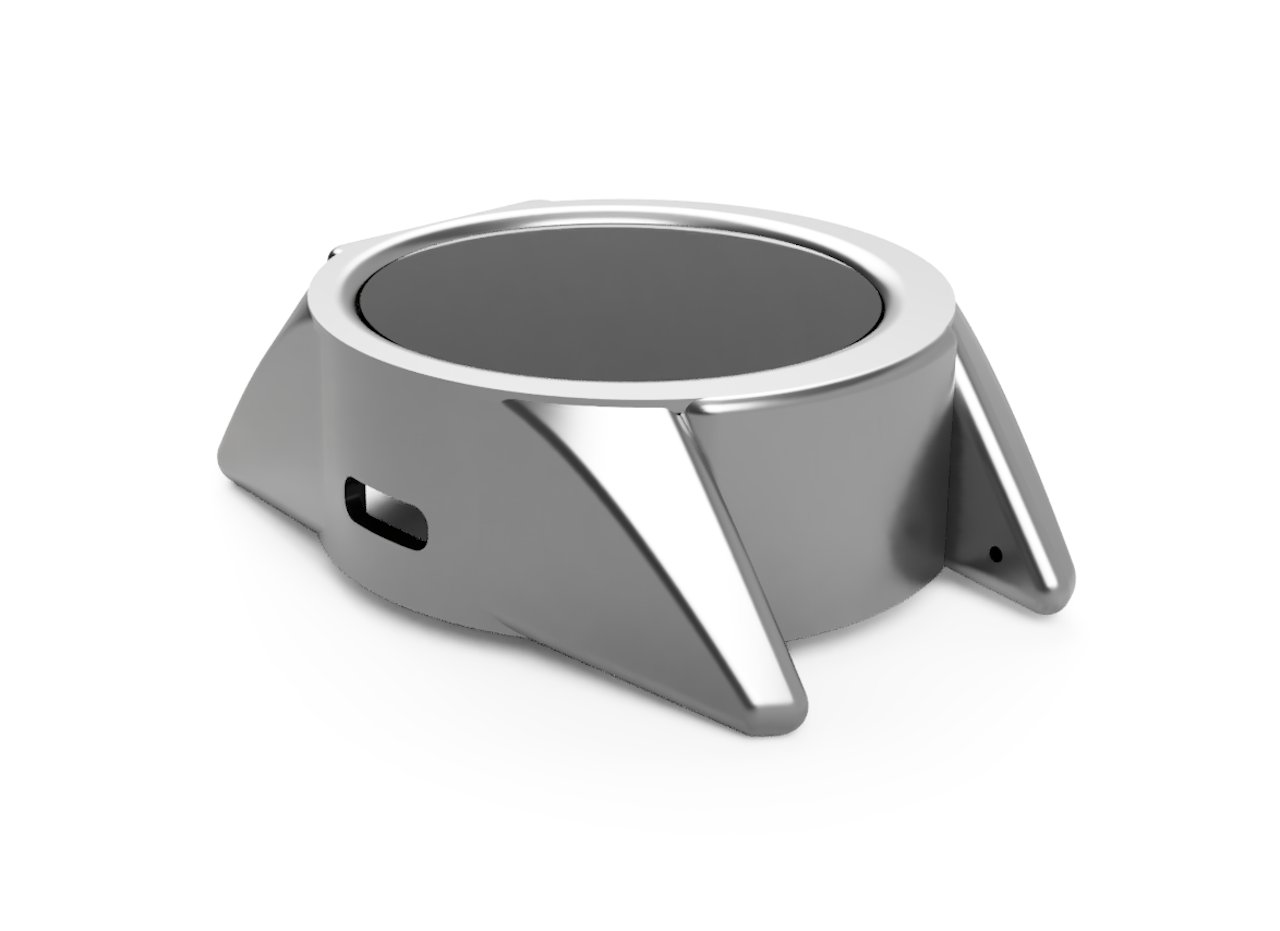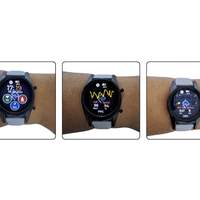Project update 7 of 16
Heart-Rate Variability (HRV), UX Improvements, Enclosure Colors, and Battery Experiments
by Ashwin WhitchurchHeart-Rate Variability
Heart-rate variability (HRV) is a popular metric for assessing the health of the autonomic nervous system or, in other words, the body’s ability to adapt to stress. It is a measure of the variation in time between each heartbeat, and is an indicator of the body’s ability to adapt to stress. HRV is a useful metric for athletes, as it can be used to monitor the body’s readiness for training, and to prevent overtraining. It is also a useful metric for people with chronic diseases, as it can be used to monitor the body’s response to stress and to assess the effectiveness of treatments.
HealthyPi Move provides the option to to measure HRV from either the ECG or PPG signal. In ECG mode, the HRV is calculated from the R-R intervals in the ECG wave, while in PPG mode, the HRV is calculated from the so-called inter-beat intervals (IBI). The following image illustrates the R-R intervals from ECG. Generally, ECG is considered the gold standard for HRV measurement, but PPG can also be used to measure HRV, and is more convenient for long-term monitoring.
HRV on HealthyPi Move (image source: Wikipedia)
HRV can be evaluated in both time and frequency domains. In the time domain, the standard deviation of the R-R intervals (SDNN) is a common metric for assessing HRV. In the frequency domain, the power spectral density of the R-R intervals can be used to assess the distribution of power in different frequency bands. HealthyPi Move provides the option to calculate the SDNN and the power spectral density of the R-R intervals, as well as all the other parameters such as RMSSD, pNN50, LF, HF, LF/HF ratio, etc.
Thanks to the computing power of the Nordic nRF5340 SoC, HealthyPi Move can calculate HRV metrics in real-time. If you do not need the full ECG or PPG signal to be logged, you can record for longer periods by doing the HRV on the device and storing only these metrics. The HRV data can be streamed over BLE and USB to a smartphone or a PC or the device can store the data on flash, so that it can be retrieved and analyzed later. Below is an example of the HRV data collected in real-time from HealthyPi Move. The HRV shown here is computed from the PPG signal from the wrist sensor, but the HRV from the ECG signal is also available on HealthyPi Move. We spoke about PPG capability on HealthyPi Move in a previous update.
HRV from PPG on HealthyPi Move
User-Interface Improvements
In the video above, you may have also noticed our new screen design. We have made some improvements to the screen layout to make it more user friendly. The home screen now displays the time (from the internal RTC) along with vital fitness indicators including heart rate, SpO₂, and steps counted since the start of the day. All screens now have a consistent and intuitive layout, with the top bar displaying the battery level, the time, and the Bluetooth status. The bottom bar displays the current mode of operation and a quick swipe left or right will change screens. More screens will be incorporated as features are added to HealthyPi Move.
Enclosure-Design Improvements
We have also made some refinements to the enclosure design and feel. We have been experimenting with different colors, materials, and finishes to make HealthyPi Move look and feel more like a premium smartwatch and less like a prototype or a research device. More on this in the next update. Below are some images of SLA printed enclosures coated in different colors, but the final product will be injection molded.
We also have an aluminum enclosure in the works and it is currently being machined. We had to make some changes to make the design machinable. The final product will be polished and will look and feel like a premium smartwatch. While we should have the final product in our hands next week, here is a render of the aluminum enclosure.
We would love to hear what you think of these new design. (Even if you don’t like any of them, we welcome your feedback!)
Other Improvements
We’ve been working on other design improvements as well. Since the nPM1300 PMIC has replaced most of our discrete power-management circuitry, software now has more granular control. We can now control the power to the sensors and the display independently and put the device in a low-power mode when it’s not in use. We have also done some interesting experiments with dynamically scaling the voltage in runtime to reduce power consumption. This will help extend battery life. We will publish more details on the power-management performance in a subsequent update.
We have also been experimenting with 3.8 V LiPo batteries, which have a slightly higher energy density than the 3.7 V LiPo batteries we have been using so far, with little impact on service life. These batteries charge up to 4.4 V (as opposed to 4.2 V for the 3.7 V LiPo batteries) and they stay in the 3.8-4.2 V range for longer, with a lower cutoff at 3.0 V. Here again, the nPM1300 allows software control of the charge voltage, and we tested charging it up to 4.35 V without any issues or any need to swap out components. If this experiment works out, we might be able to upgrade to 3.8 V batteries for the production model of HealthyPi Move.
Stay tuned for more updates. We are working hard to bring you the best possible product, and we can’t wait to share our latest and greatest improvements!
